![]()

by Simplicius
last time I had posted Ukraine’s head of aerial reconnaissance support, Maria Berlinskaya, stating how Western systems in Ukraine have proven worthless because of the power of Russian EW. In fact, I’m going to post it again just to have it all under one roof for those who haven’t read the previous SitRep, and because I think this particular thread is that important:
Well, now, we have the highest level confirmation of the above from an actual U.S. official. The Undersecretary of Defense for Acquisition and Sustainment, William Laplante, just dropped a major bombshell which should dim any hopes of major ATACMS triumphs, as so many are emptily looking forward to:
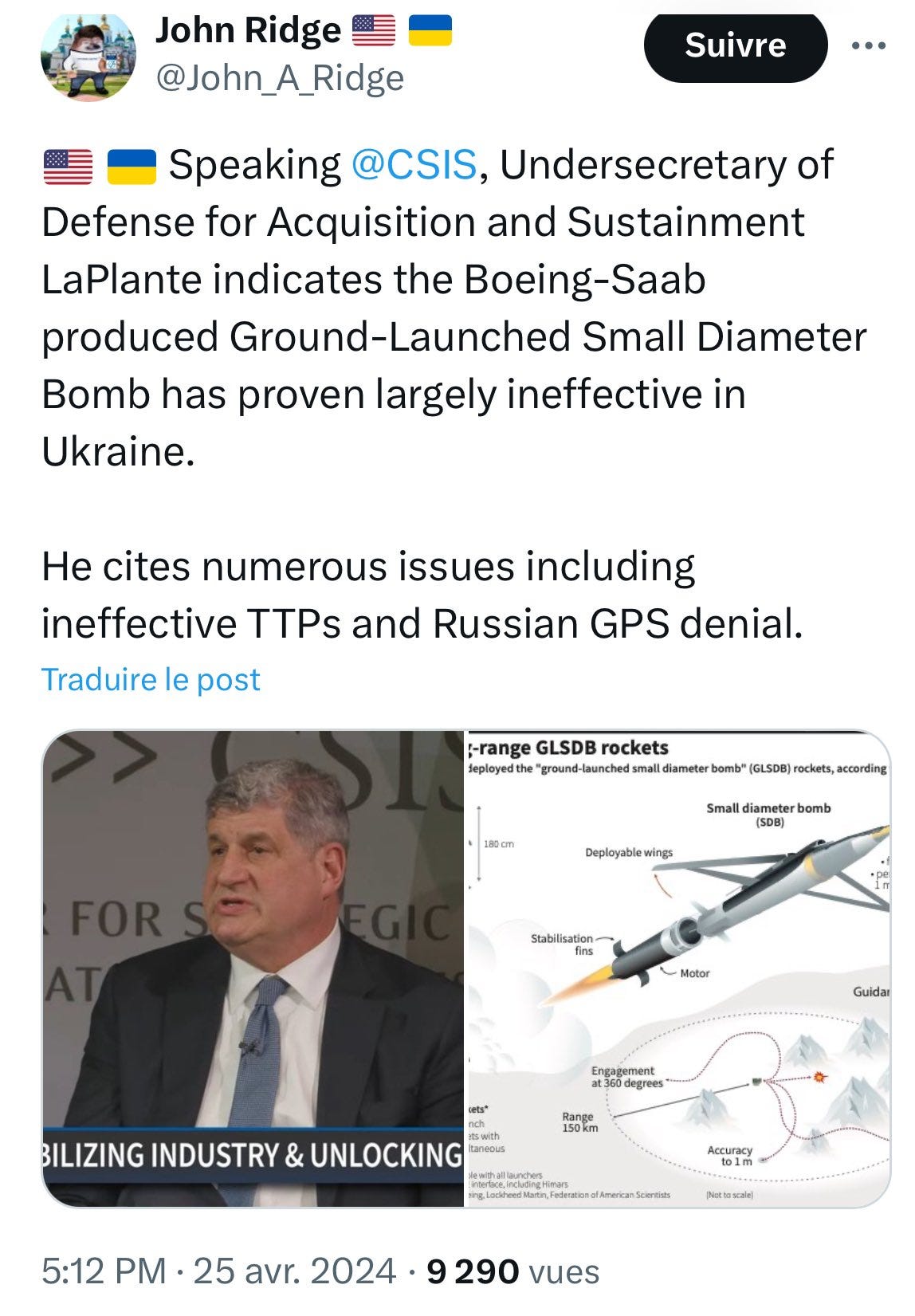
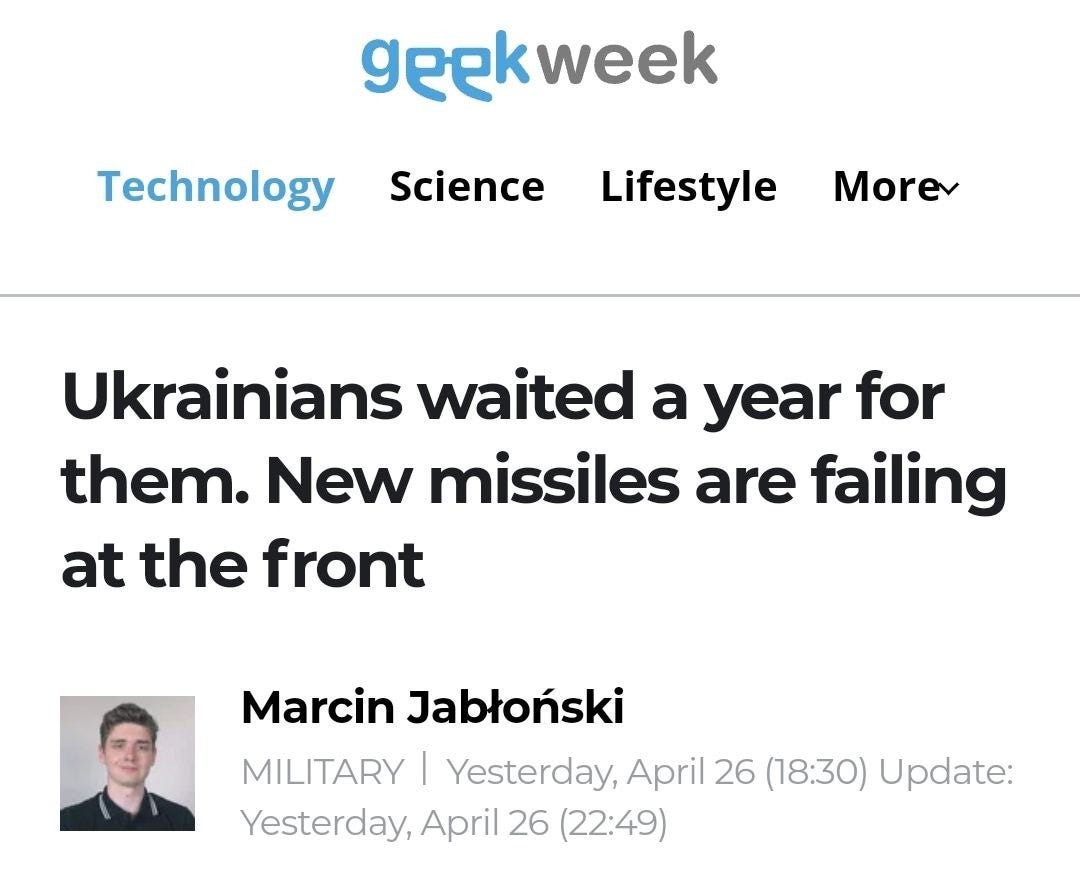

That’s right—on a panel for the Center for Strategic and International Studies, Laplante outright admitted that the much-hyped GLSDBs have proven an abject failure due to Russian jamming environments. Some have rightfully proposed this is due to the fact that an SDB glide-bomb is pretty slow once it detaches from the HIMARS booster rocket. And thus, as it slows while gliding toward the target, it must overfly a lot of EW contested airspace which gradually degrades its GPS course correction more and more until its targeting is way off by the time it reaches the actual target.
A detailed technical explanation was given by The Right People Z Telegram channel:
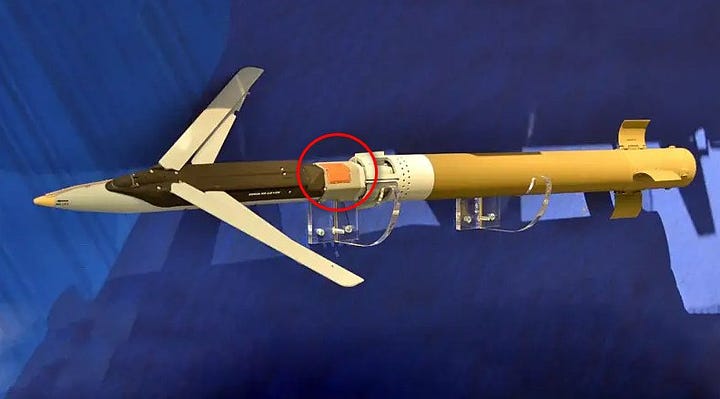
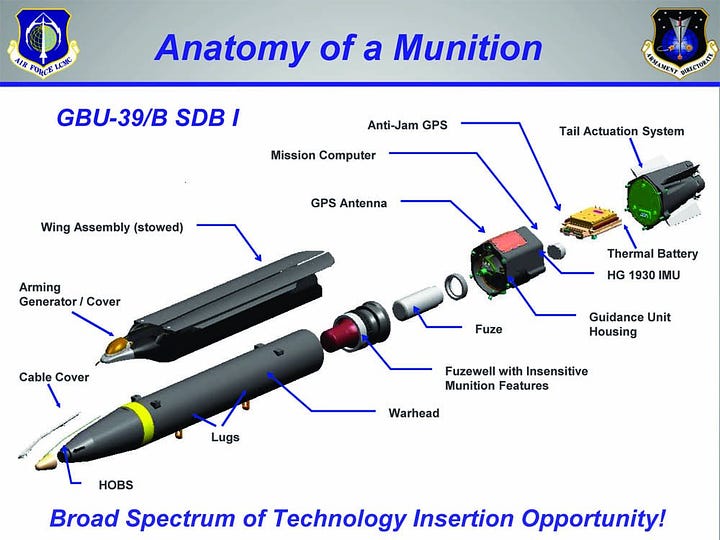
The antennas of the GPS correction modules integrated into the guidance and control systems of the GBU-39/B hybrid 227mm GLSDB guided missiles have been confirmed to have low interference immunity. This was once again reminded by US Undersecretary of Defence for Acquisition and Supply Bill LaPlante during the US Center for Strategic and International Studies (CSIS) conference.
It is obvious that the GPS receiver presented by the Boeing Corporation as anti-jam GPS has completely lost its effectiveness in the difficult jamming situation in the airspace over Donbass.
Even in spite of the top-oriented position of these antenna modules, EW complexes “Zhitel” (“Житель”), “Field-21” (“Поле-21”) and “Serp-VS5” (“Серп-ВС5”) easily suppress their receiving channel, which leads to an increase in the circular probable deviation of GBU-39/B bombs from 1.5 – 3 to several tens of metres, reducing their effectiveness to unacceptable levels.
On the contrary, domestic GLONASS/GPS-antennas “Kometa-A/M/R8” (“Комета-А/М/Р8”) are able to withstand interference from the majority of enemy EW means operating in the L-band.
This has a number of very important implications, as this is one of NATO’s main air-to-ground strike weapons and due to its use in Ukraine, it has become ineffective, which will make its future use against rivals such as China or Iran and even more local actors ineffective.
Other weapons systems not only fly faster and spend less time under the influence of EW, but they also have other targeting redundancies which the simplified systems like the GLSDB and JDAM-ER lack. For instance, more sophisticated systems like cruise missiles (Storm Shadow, Kh-101s, etc.) or even some ballistic missiles like Israel’s recently used ROCKS (Sparrow) or Russian Iskander have terminal opto-electric guidance in the form of DSMAC (Digital Scene-matching Area Correlator) which allow them to view the target with a camera and match it with a pre-programmed image of it to course correct. That means even if GPS is jammed, they could still accurately hit the target by what is effectively an AI visual guidance mode. But these systems are extremely sophisticated and expensive, and the whole point of the GLSDB was that it was billed as a cheap alternative, using old stockpiles of super cheap SDB bombs fitted onto HIMARS boosters.
This is likely the same reason JDAM-ERs have proven a dismal failure, as they function almost identically to the gliding SDBs and have already long been known to be highly susceptible to EW by the U.S. Pentagon, even long before the Ukraine war.
But here’s where the Russian defense industry has shown its ingenuity and robust adaptability in one: while Russian UMPK glide-bombs would theoretically suffer from the same exact issue, and likely did, which would explain some of the earliest reports of their “inaccuracy” by the Ukrainian side, Russian engineers quickly adapted. Recall my previous reports about the new Kometa-M satellite transceiver modules being found installed not only on Iskanders but UMPKs as well.
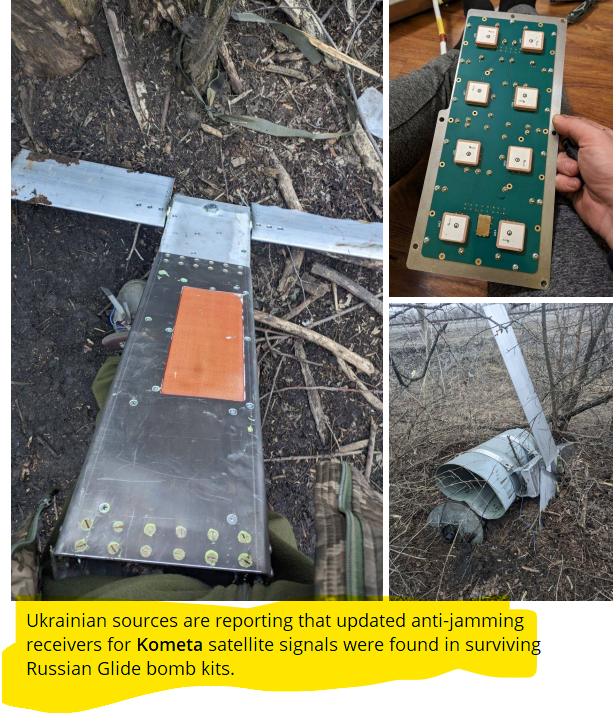
Russian UMPKs likewise started with only 4 or less Kometa receivers, and after some time were upgraded to 8, which now make them far more impervious to EW signals and therefore much more accurate, as the Glonass/GPS correction is not as degraded when overflying an EMI environment.
And on that topic, we have the latest:
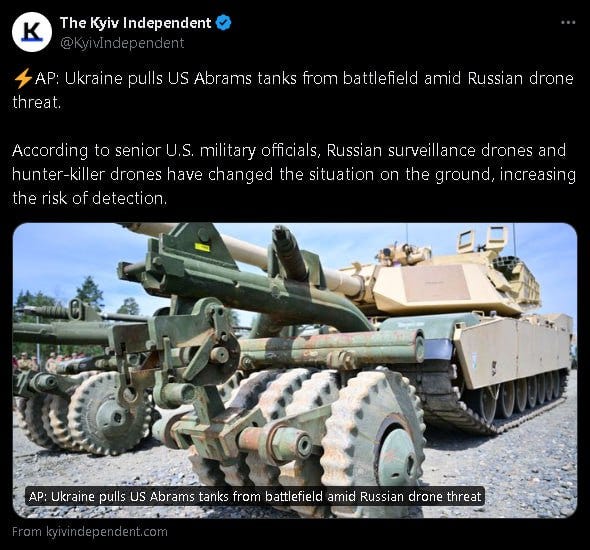
That’s right, Ukraine has now officially pulled its Abrams off the line because they have proven ineffective. From the article:
The official spoke on the condition of anonymity to provide an update on U.S. weapons support for Ukraine before Friday’s Ukraine Defense Contact Group meeting.
For now, the tanks have been moved from the front lines, and the U.S. will work with the Ukrainians to reset tactics, said Joint Chiefs of Staff Vice Chairman Adm. Christopher Grady and a third defense official who confirmed the move on the condition of anonymity.
“When you think about the way the fight has evolved, massed armor in an environment where unmanned aerial systems are ubiquitous can be at risk,” Grady told the AP in an interview this week, adding that tanks are still important.
“Now, there is a way to do it,” he said. “We’ll work with our Ukrainian partners, and other partners on the ground, to help them think through how they might use that, in that kind of changed environment now, where everything is seen immediately.”
All of this comes on the heels of another interesting article from the NYTimes:

Some may recall I covered such efforts as the DOD’s Project Maven before, in articles like this one.
But in the new article, David E. Sanger writes that the results of this combined Google-DARPA effort to institute an AI-driven ‘back-end’ to process vast troves of battlefield surveillance data have in fact been ‘mixed’.
How’s this for admissions?

The first two years of the conflict have also shown that Russia is adapting, much more quickly than anticipated, to the technology that gave Ukraine an initial edge.
And another which corroborates the earlier GLSDB snafu:
In the first year of the war, Russia barely used its electronic warfare capabilities. Today it has made full use of them, confusing the waves of drones the United States has helped provide. Even the fearsome HIMARS missiles that President Biden agonized over giving to Kyiv, which were supposed to make a huge difference on the battlefield, have been misdirected at times as the Russians learned how to interfere with guidance systems.
The article goes on to name and describe the physical heart of this NATO ‘backend’ I’ve described for over a year now:

It names ex-Google CEO Schmidt as being the main impetus behind Ukraine’s new push toward autonomous AI drones which can hunt human targets on their own after their signal has been cut by EW.
Ultimately though the article confesses that these technological leaps will not be enough to defeat Russia, which is adapting just as quickly to battlefield developments, yet actually has the manufacturing girding on top of that which Ukraine lacks. In short: both sides hold key asymmetrical advantages over the other, but Russia is inching on the West’s advantage of satellite ISR—particularly the constellation of Starlink satellites—while Ukraine is not making any headway toward Russia’s massive munitions and armor manufacturing overmatch.


Why did we send long range middles to Ukraine? Does biden want a hot war with Russia? Did Polly pockets Johnson know about this before he pushed the Ukraine funding?
Word has it that the biden regime doe not think Ukraine is capable of winning against Putin regardless of how much money we send.
biden needs this war to continue so it does not become a bigger election issue than it already is.
So they can hit Russian targets at a greater distance? Just a wild guess, of course.
https://www.yahoo.com/news/us-buys-81-soviet-era-145127753.html
U.S. Military buys 81 old Russian MIG fighter jets for $2 million. Sounds like a cheap gift for Zelens
Sounds like Russian target practice.
Dirt cheap replacement parts? Decoy ground targets? Maybe some could be converted into supersonic long-range drones. Even a pokey Cessna drone evaded Russian air defenses and hit a refinery.
After a year the Ukrainian pilots cant fly our aircraft this is what they flew, its Russan target practice.
The biden regime has no confidence in Ukraines ability to win the war much less to hold back Russia. They needed a lifeline to get to November, enter Polly pockets Johnson.
Basic F16 pilot training takes nine months. That’s followed by combat readiness training.
After a full year all they can do is fly it from base to base the project is a failure.
They might fly them all the way to Moscow, given Russia’s difficulties stopping a drone Cessna from hitting an oil refinery.
We were all told Joe “President Magoo” Biden was a foreign policy expert. That was supposed to be his wheelhouse. But think — can you name a single foreign policy achievement of his administration?! In terms of the relentless MSM propaganda that would have ensued had Russia been defeated and retreated from the Donbas — yes, that would have been classed as a massive foreign policy “win” for Biden. As would the fall of Kiev been equally held a catastrophe for him.
So Mike “No-Johnson” Johnson — and the rest of the UniParty slime in the GOP with him — passed the $61bn for Ukraine for one simple reason. To bail out Biden and stab Trump in the back.
Sources:
https://www.theguardian.com/world/2024/apr/25/ukraine-war-briefing-long-range-atacms-already-hitting-russian-forces
https://www.theguardian.com/world/2024/apr/26/ukraine-war-briefing-kyiv-pulls-back-abrams-tanks-due-to-drone-raids-and-losses-says-us
https://www.politico.eu/article/united-states-warnings-ukraine-strikes-two-fuel-depots-russia/
https://www.politico.com/news/2024/04/24/biden-ukraine-russia-war-aid-00154143